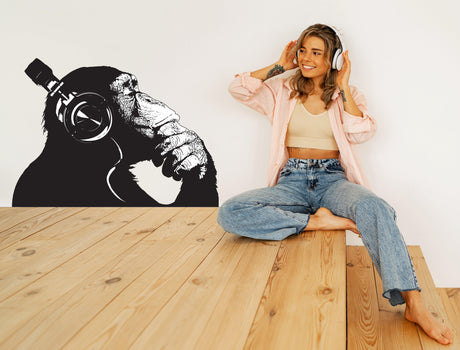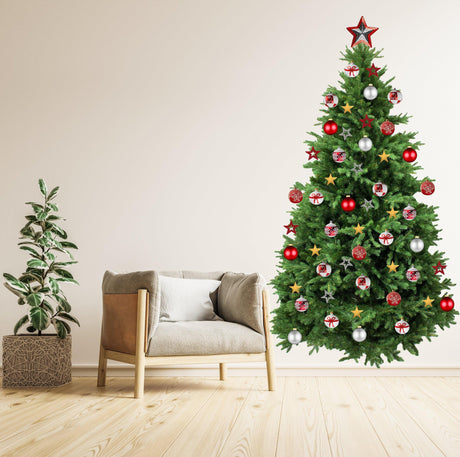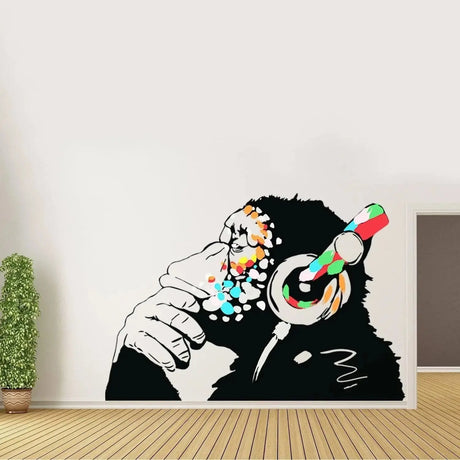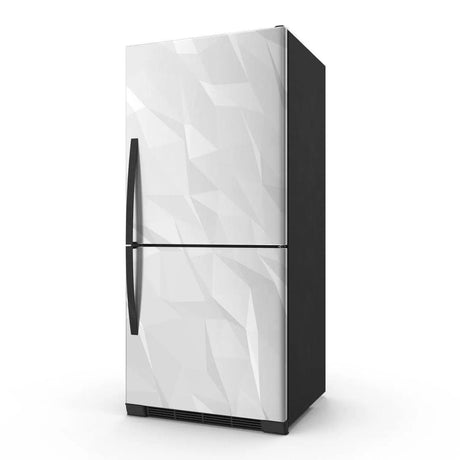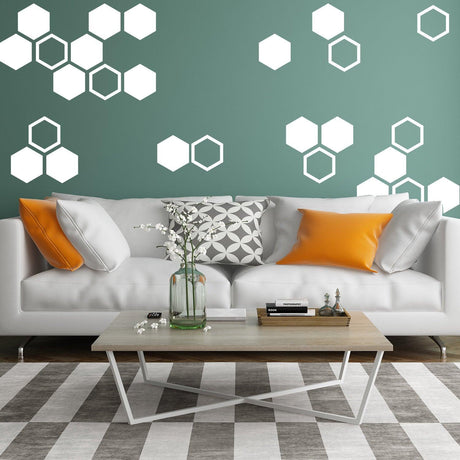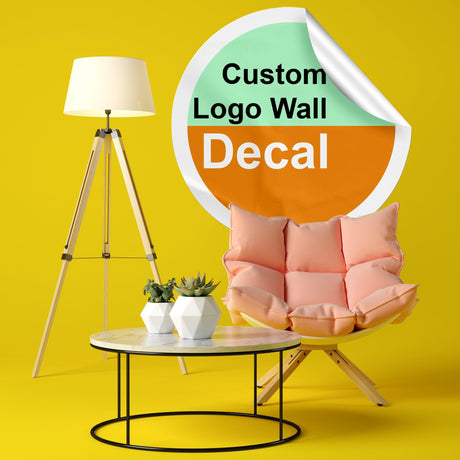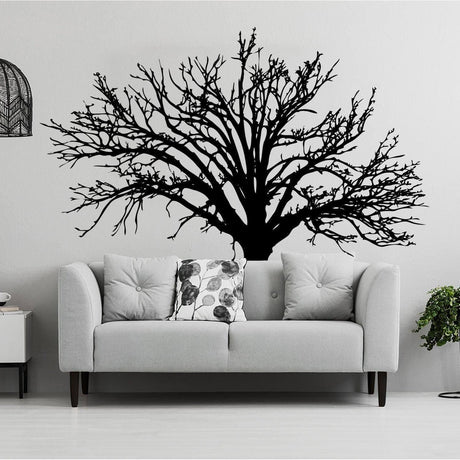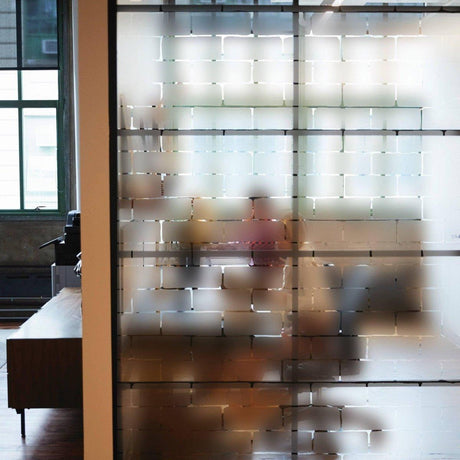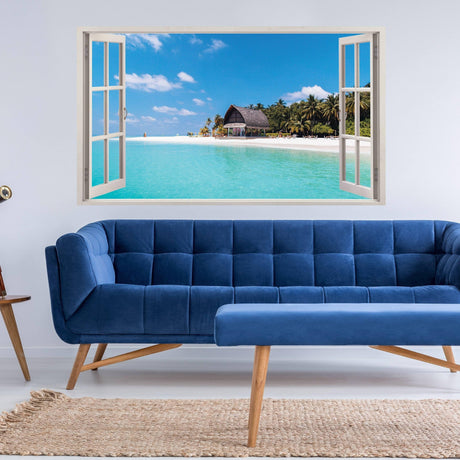Bathroom walls live in a tough climate: steam, heat, splashes and frequent cleaning. Paint fades, grout stains easily, and classic wallpaper simply cannot survive in that environment. Moisture resistant wall decals solve this problem. They let you refresh tiles or painted walls without renovation, are easy to clean, and can be removed or replaced whenever you want a new look. In this guide you’ll learn how bathroom wall decals work, which materials last in wet rooms, how to choose the right design and how to prepare surfaces so the decals stay in place.
What makes bathroom wall decals different from regular wall stickers?
Bathroom wall decals are engineered for moisture, steam and cleaning. They use stronger films, sealed surfaces and adhesives that work on smooth, non porous surfaces like tiles, glass and shower panels. Regular room stickers, which are designed for bedrooms or living rooms, often lose adhesion in humid rooms or start peeling at the edges.
A moisture resistant decal is built on a stable vinyl or polyester film. This film is thicker and more durable than standard wall decals. It stays flat under steam, resists small scratches and does not warp when the room temperature changes. Because the surface is sealed, water slides off instead of soaking in, which prevents bubbling.
Adhesive is another key difference. Bathroom wall decals rely on glues that bond well to glossy surfaces. They hold tight even when the room heats up during a hot shower. At the same time, these adhesives are still removable with slow peeling, so you don’t damage your tiles when updating the design.
Print quality matters too. In bathrooms, decals face direct light, steam and regular wiping. That’s why quality products use UV stable, water resistant inks that don’t fade or smear. Cheaper decals may look good at first but can crack, peel or discolor after a few weeks of cleaning.
These combined features ensure that bathroom wall decals stay beautiful and functional in conditions where normal wall stickers fail.
Which moisture resistant materials and finishes work best in bathrooms?
Not all decal materials handle water and cleaning the same way. Bathroom decals need films that stay flexible, stable and easy to clean, even after months of exposure to steam.
Vinyl film is the most common option. It is flexible enough to follow slight tile joints and sticks very well to ceramic and glass. A medium thickness vinyl film usually works best for bathrooms: thin films emphasize every grout line, while very thick films are harder to apply without bubbles.
Polyester film is another strong choice. It is more dimensionally stable and shrinks less over time. This helps with long, narrow decals, such as linear patterns running along the backsplash or accent borders around mirrors. Some polyester films have special coatings that improve color saturation and scratch protection.
The surface finish also defines the look. Glossy films reflect light and mimic the shine of glazed tiles, making the room feel clean and fresh. Matte finishes soften reflections and hide small scratches better. Textured finishes create the impression of stone or concrete but still need a sealed top layer to repel water.
Cleaning tolerance is essential. High quality bathroom decals can be wiped with a soft sponge and mild soap without losing color. You should avoid abrasive pads and harsh chemicals, but simple daily cleaning must not damage the film or print.
Over time, the best films keep their color, stay flexible and avoid yellowing around the edges.
How to choose bathroom wall decals that match your tiles and style
The right design can transform a bathroom of any size. Because decals go directly onto tile or paint, you need to consider how color, pattern and scale interact with the existing surfaces.
Start with the base layer: your tiles. If they are plain white or light neutral shades, you have more freedom. Brighter colors, geometric shapes or bold patterns will stand out nicely. If your tiles already have texture or busy details, choose simpler motifs with fewer colors so the wall doesn’t feel overloaded.
Scale helps define the visual flow. Large motifs like oversized leaves, flowing wave patterns or wide brush strokes work best on big open walls. They stretch the space visually and reduce clutter. Smaller motifs, such as scattered dots or mini tile decals, suit narrow spaces above sinks or around mirrors. In small bathrooms, mixing too many pattern sizes can create visual noise, so keep the scale consistent.
Color plays a functional role too. Light blues, greens, sand and soft gray tones create a clean, fresh mood. They work well with white fixtures and help reflect light in windowless bathrooms. Darker decals can look dramatic but may highlight water spots more clearly.
Some themes feel natural in humid rooms: waves, ocean motifs, shells, minimalist botanicals or abstract geometric lines. These connect the function of the space with the mood you want to create.
What designs work best in small or windowless bathrooms?
Small or windowless bathrooms benefit from vertical motifs that lift the eye. Tall plant silhouettes, vertical stripes or patterned borders near the ceiling create height. Use soft contrast instead of heavy dark shapes so the room feels open. Light metallic or mirrored accents can brighten corners, but use them sparingly.
Avoid dense patterns on every wall. A single feature wall is enough. Over-decorating often makes small bathrooms feel even smaller.
How to prepare tiles and walls before applying bathroom wall decals
Preparation makes the difference between decals that last and decals that peel. Bathrooms collect soap residue, limescale and cleaning products, all of which weaken adhesion if left on the surface.
Clean the wall thoroughly with a mild detergent that removes grease and soap. Rinse with clean water and dry with a lint free cloth. Inspect grout lines. If grout is stained, wet or crumbling, fix it before installing decals. Decals adhere best to flat tile faces and smooth paint.
If your design places decals partly over grout, check that the grout is fully cured and even. Very deep or uneven grout lines can create pockets of air under the film. Try to place most of the adhesive on smooth surfaces for stronger hold.
Install decals only when the bathroom is completely dry. Do not apply them after a shower or while the air is humid. Moisture at the moment of installation can trap steam under the film and reduce adhesion. Open a window or run a fan if needed.
After cleaning and drying, plan your layout. Use painter’s tape to test positions, align edges and keep long decals straight. This is especially useful for geometric patterns or borders where misalignment becomes visible.
How to keep moisture resistant decals clean and mold free
Moisture resistant decals need only simple care. Wipe them with a soft cloth and mild soap to remove stains. Rinse and dry so water doesn’t stay on the edges for too long. Avoid spraying strong detergents directly on the film.
If decals are near the shower, place them where they receive splashes but not the full stream of water. Constant pressure from a showerhead can slowly weaken edges.
If a corner lifts, gently press it back once the wall is dry. Persistent lifting indicates a surface issue or a placement too close to heavy moisture. In such cases, repositioning may work better.
Buying guide: how to pick the best bathroom wall decals on Decords
When browsing on Decords, check three aspects: suitability for wet rooms, material details and design flexibility.
Look for listings that explicitly mention bathrooms, wet rooms or moisture resistant films. Products made only for bedrooms or living rooms often won’t survive the humidity of a shower space.
Then read the material description. A strong listing names vinyl or polyester film, indicates thickness, and describes the finish (glossy, matte or textured). Many bathroom decals mention tiles, glass, plastic panels or smooth painted walls as recommended surfaces.
After confirming material quality, choose a design that blends with your tiles and fixtures. On Decords, you can combine matching sets or create a coordinated look with ocean themes, geometric borders or minimal botanical shapes.
Before ordering, use a simple checklist.
Checklist before buying bathroom wall decals:
- The listing states they are suitable for bathrooms or wet rooms.
- The material is moisture resistant and thickness is listed.
- Recommended surfaces include tiles, glass or non porous walls.
- The decals allow gentle cleaning with mild soap.
- The design size matches your wall or tile pattern.
Think also about future updates. If you plan to refresh the bathroom again, choose brands that offer matching sets. This makes it easy to expand or adjust the design later without replacing everything.
With the right bathroom wall decals, you can upgrade your space in one evening. The room becomes cleaner, brighter and more personal without the cost of a renovation.

